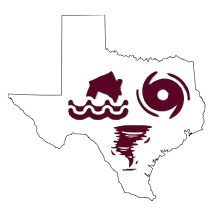Evacuation Procedures
If an evacuation has been called, follow the order issued by officials. Emergency and rescue services may not be available for assistance during the storm, and other communications may be rendered inoperable. Get out of the danger area as soon as authorities indicate it is time to do so. Leave as early as possible to avoid traffic, preferably in daylight, and have your destination planned well in advance. However, evacuate only when it is your area’s time — not before!
Listen to your local TV or radio station for shelters that are open to the public. You can also search for open shelters on an interactive map online on the Red Cross webpage. Evacuation shelters have a maximum space of 10 square feet of bare floor per individual. Bedding, food, water, and other essentials may or may not be provided, so your evacuation kit should contain these important items.
Evacuation for a Hurricane
Do not be deceived into disregarding an evacuation order for a Category 1 or 2 hurricane. Hurricane Ike was a Category 2 hurricane based only on sustained wind speed; however, the overall size and 15-foot storm surge made it one of the most destructive and deadly hurricanes to strike the 28 Texas coast. “Run from the water, hide from the wind” is a hurricane adage that has been used from Florida to Texas by emergency management teams for hurricane response. Despite the adage, you should especially abide by the evacuation order if any of the following conditions apply:
- You live in a mobile home or temporary structure.
- You live in a high-rise building.
- You live on the coast, in a floodplain, near a river, or on a peninsula or barrier island.
- You live in a Special Flood Hazard Area (Zone A) or a high-velocity wave/storm surge zone (V zone).
- You live in a certain type of wood frame structure (e.g., single wall without a continuous load path design) or lightly constructed building.
- You live in an area that has been directed to evacuate by local authorities.
County judges and city mayors have the authority to order an evacuation. When you evacuate, locate a place that is far from flood or inundation zones and far from the projected track of the storm, and stay in a structure that is able to withstand strong winds and rain. To implement a large-scale, multi-jurisdictional evacuation, evacuation zones have been designated by the Texas Department of Public Safety and are based on the severity of the storm.
Evacuation for a Flood
The general rule for evacuating from a flood is to stay away from floodwaters and head to higher ground. In flooded areas, you may not be able to perceive the depth of the water, the condition of the ground under the water, or debris contained in the water. This is especially true at night, when vision is limited. Never attempt to cross through flooded roadways – roadbeds may be washed out. If caught in a home during a flood, go to the second floor or the roof, but do not go into the attic where ventilation is limited.
Basic Safety Tips
Turn Around, Don’t Drown! ®
- Avoid walking or driving through floodwater. Just 6 inches of moving water can knock you down, and 1 foot of moving water can sweep your vehicle away. Water may also contain dangerous debris, chemicals, or insect swarms.
- Do not drive on bridges that are over fast-moving floodwater. Floodwater can scour foundation material from around the footings and make the bridge unstable.
- If there is a chance of flash flooding, immediately move to higher ground.
- If floodwater rises around your car, do not open your doors, but unbuckle your seatbelts and roll down your windows. Get all passengers out through the windows and onto the top of the car until help comes.
- During heavy rainfall, avoid camping or parking along streams, rivers, and creeks. These areas can flood quickly and with little warning.
